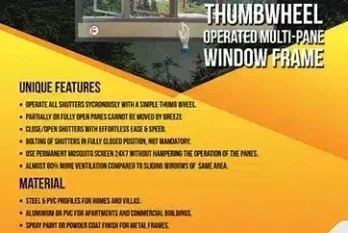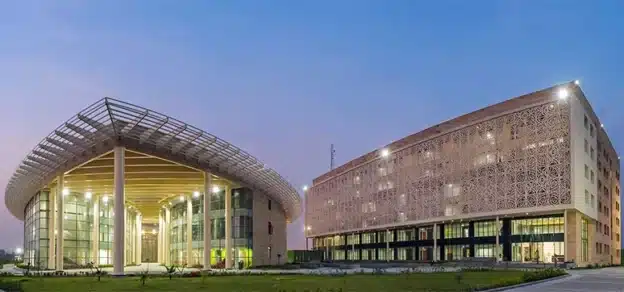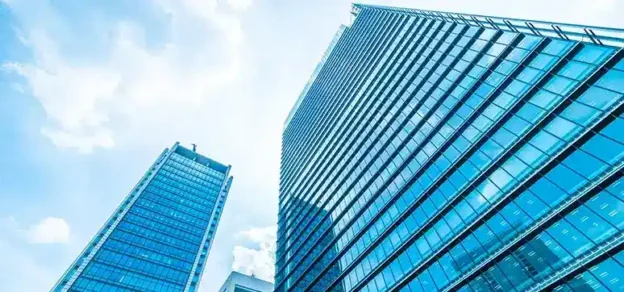Energy-conserving and efficient glass façades and fenestrations are essential for creating sustainable and energy-efficient buildings. Glass is a popular choice for building façades because it allows natural light to enter the building while providing thermal insulation. However, without proper design and technology, glass façades can also contribute to heat loss and gain, resulting in increased energy consumption.
The benefits of an energy-efficient glass façade include improved energy efficiency, reduced reliance on artificial lighting, and increased occupant comfort. However, they can also be more expensive than traditional building envelopes and may require additional maintenance and cleaning due to their large surface area.
Here are some ways to make glass façades and fenestrations energy-efficient:

1. Massing & orientation: Orienting and developing geometry and massing of the building to respond to solar positions. The orientation of the glass in relation to the sun can also impact energy efficiency. Windows facing south can gain more heat in the winter, while windows facing east and west can gain more heat in the summer.
2. High-performance glass: Using high-performance glass with low emissivity coatings, multiple layers, and special gas fills between the layers can significantly reduce heat loss and gain. This helps to maintain a comfortable indoor temperature and reduces the need for heating and cooling. These coatings are thin, transparent layers of metal or metallic oxide that are applied to the glass surface. They work by reflecting heat back into the atmosphere, reducing the amount of heat that enters inside the building skin through the glass. This can significantly reduce energy consumption and heating costs.
3. Double skin façades: Almost a self-explanatory name for façade systems consisting of two layers, usually glass, wherein air flows through the intermediate cavity. This space (which can vary from 20 cm to a few meters) acts as insulation against extreme temperatures, winds, and sound, improving the building’s thermal efficiency for both high and low temperatures. Perhaps one of the most famous examples of double-skin façades is Foster+Partners’ 30 St Mary Ax Building, “The Gherkin.” The airflow through the intermediate cavity can occur naturally or be mechanically driven, and the two glass layers may include sun protection devices. While the concept of double-skin façades is not new, there is a growing tendency for architects and engineers to use them. Particularly in skyscraper design, they are favored for their transparent façade, thermal and auditory comfort, reduced air conditioning costs, and elimination of the need for window-specific technologies.

4. Insulated glass, also known as double glazing or insulated glazing, is a type of window or door glass that consists of two or more glass panes separated by a layer of air or gas, such as argon or krypton. The glass panes are usually held together with a spacer bar and sealant. The primary purpose of insulated glass is to improve energy efficiency by reducing the transfer of heat through windows and doors. The trapped air or gas layer between the glass panes acts as an insulator, reducing heat loss or gain through the glass. Insulated glass also offers additional benefits, such as noise reduction, improved safety, and reduced condensation. It is commonly used in residential and commercial buildings and can be found in a variety of window and door styles, such as double-hung windows, sliding doors, and patio doors.
5. Solar shading: Incorporating solar shading devices like louvers, shades, or screens can reduce the amount of direct sunlight that enters the building, thereby reducing solar heat gain. This can help to reduce the need for air conditioning and lower energy consumption.
6. Window-to-wall ratio of the WWR can have a significant impact on the performance of glass in a building. A higher WWR can result in increased solar heat gain, greater potential for glare and overheating, more heat loss through windows, and increased noise levels. Therefore, it is essential to consider the WWR carefully when designing a building and selecting glass for the windows.
7. Vacuum insulated glass: This technology involves sealing two panes of glass together with a vacuum between them, which eliminates heat transfer through convection and conduction. This can provide even greater insulation and energy savings than traditional double or triple-glazed windows.
8. Electrochromic glass: Also known as smart glass or switchable glass, is a type of glass that can change its opacity or transparency in response to an electrical signal. This is achieved through the use of thin films or coatings of electrochromic materials, which are typically made up of metal oxides. When an electrical current is applied to the electrochromic material, ions are transported from one layer to another, causing a change in the material’s color and/or opacity. This change can be reversed by applying a voltage of opposite polarity, allowing the glass to switch back and forth between transparent and opaque states. This technology can be used to control the amount of sunlight and glare that enters a building, reducing the need for heating and cooling.
9. Photovoltaic glass: Photovoltaic glass, also known as solar glass or PV glass, is a type of glass that is designed to generate electricity from the sun’s energy. It is made by embedding photovoltaic cells, which are typically made of silicon, into the glass. When sunlight hits the PV cells embedded in the glass, it is converted into electrical energy, which can be used to power a range of devices, such as lights, appliances, and even entire buildings. This technology is often used in building façades and windows, as it allows buildings to generate their energy and reduce their reliance on the grid.
In addition to generating electricity, photovoltaic glass can also help to regulate the temperature inside buildings by reducing heat gain and glare. This can help to improve energy efficiency and create a more comfortable living or working environment. Overall, photovoltaic glass is an innovative technology that has the potential to transform the way we generate and use energy, and it is likely to play an increasingly important role in the sustainable buildings of the future.
10. Spectrally selective glass: Spectrally selective glass is designed to allow visible light to pass through while blocking heat-producing infrared radiation. This type of glass is useful in sunny climates where heat gain is a significant issue.
Conclusion:
The energy we consume is limited and precious, hence we all need to try and build it in an energy-optimised way. This requires greater communication and cooperation between the product groups. The aim is to reduce the need for primary energy for the operation of a building to a minimum – ideally even to zero. This means that the energy consumption for ventilation, lighting and cooling must be reduced through smart glass façades that react actively and automatically to their environment. Resource-saving, energy-efficient façade solutions, therefore start with intelligent and interdisciplinary planning and design. Smart façade systems represent a particularly promising technology for new buildings and the energy-efficient renovation of buildings. Energy saving with intelligent façades already is the future














